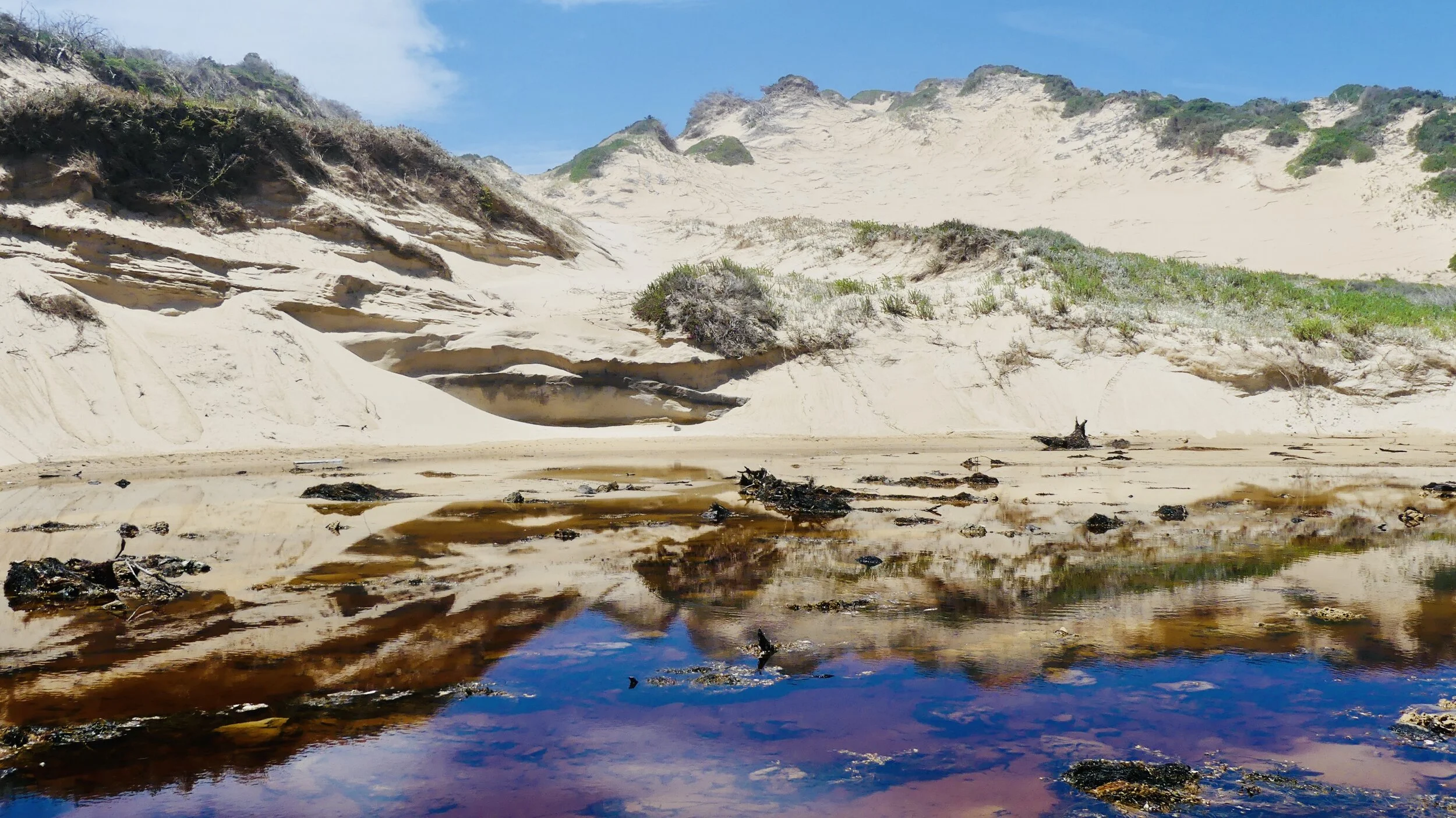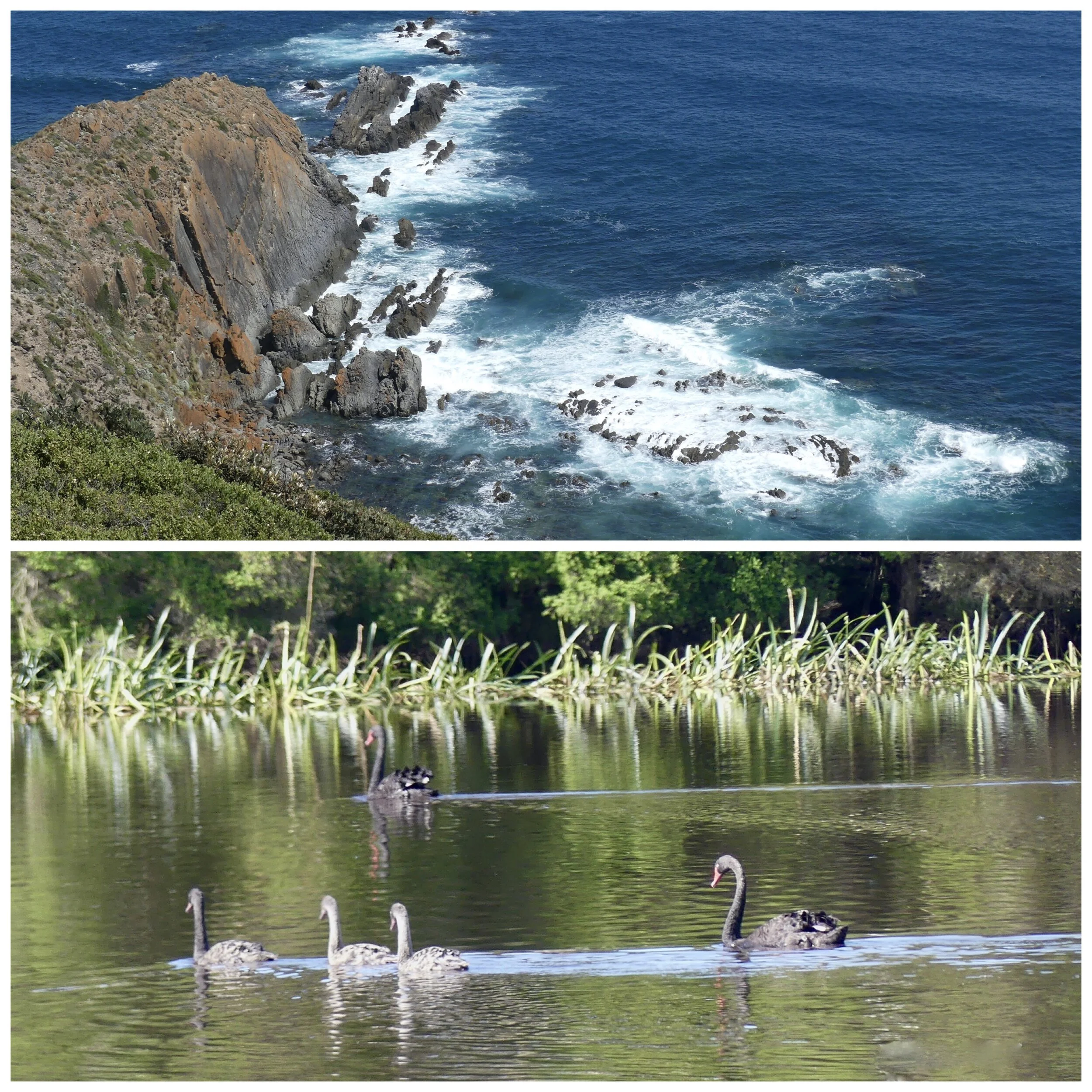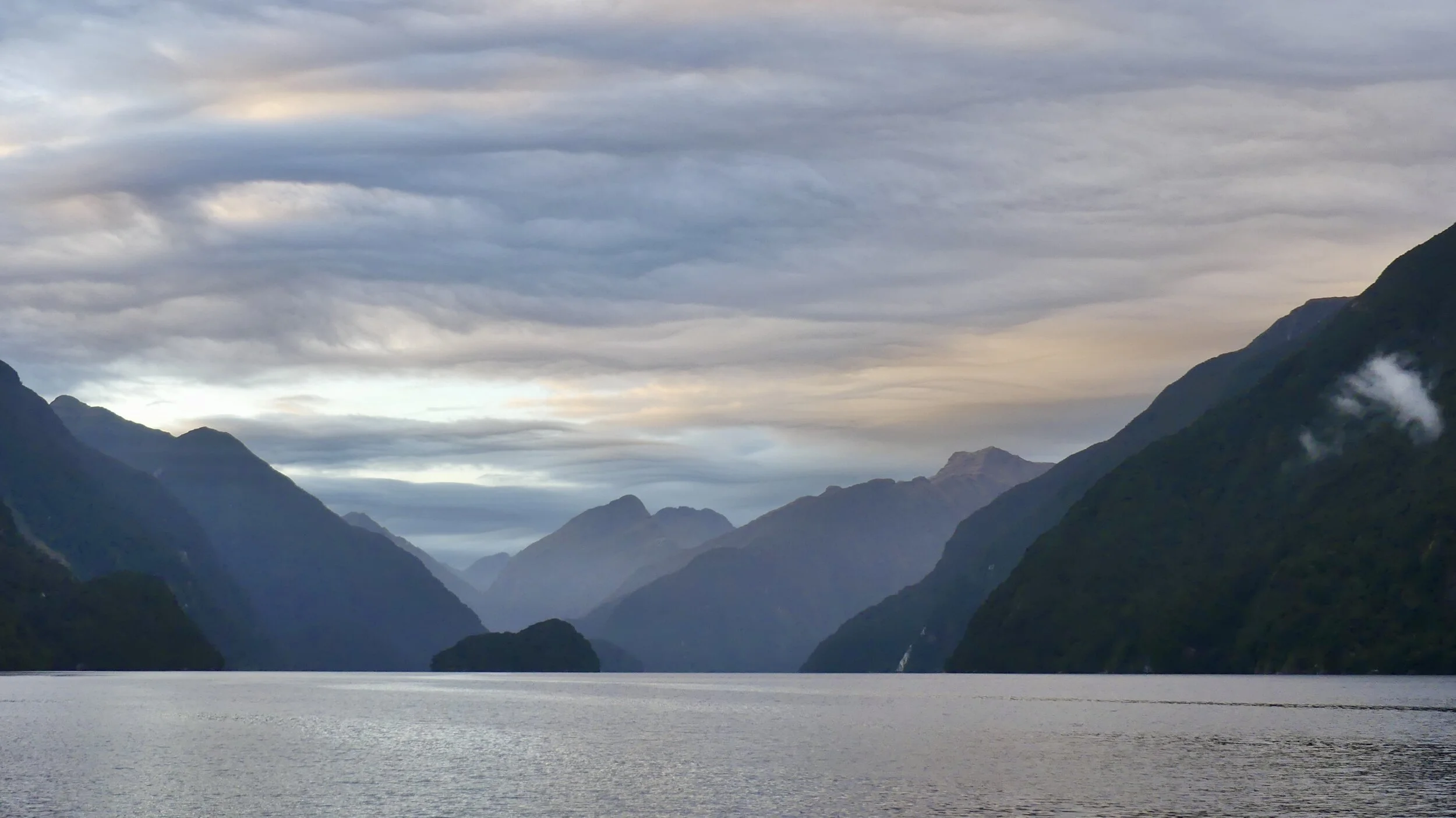Wilsons Prom revisited
On 15 November we escaped from Melbourne, for the first time since 30 May. For most of the second covid lockdown we couldn’t travel more than five kilometres beyond our home. Now we were good to go for three hours, to South Gippsland: the Monash Freeway seemed alarmingly busy for a Sunday morning.
The Prom the first time was at Easter 2018 (see also here and here). This time we chose mid-week, term time, post-covid but with neither international nor interstate ‘extras’.
For two days a big wind deterred us from lengthy walks. And on the morning of the third day a fractured gum tree limb narrowly missed my friend and our car parked alongside the cabin.
We had lazy starts to our days. There was constant bird song: the locals included a pair of relatively softly-spoken Yellow-tailed Black-Cockatoos and feisty mobs of Sulphur-cresteds. Our calming view was ever-changing with light and tide.
On Monday morning we went into Fish Creek, about 20 minutes away. A helpful lady beamed at us as we walked away from a second closed cafe: ‘No one comes to Fish Creek on Mondays: nothing’s open’. We’d done the same thing on our previous visit: we be slow learners from the city. But did no one know that Melburnians had been let out and were trying to support Regional Victorians who’d been doing it tough? (We made up for it on a subsequent visit into town, in the charming Ride the Wild Goat gallery.)
Next day the wind had eased a bit, but we opted for sheltered woodland rather than exposed shore. The Lilly Pilly Circuit (5.8 km; 2-3 hours) through stringybark forest is accessed just north of Tidal Reach tourist centre. It struck me how much I’d been missing trees.
Halfway round the circuit is a 600-metre boardwalk through rainforest. We learned the most extraordinary thing there: in Lilly Pilly Gully lives the Lilly Pilly Burrowing (freshwater) Crayfish. A slow-flowing creek meanders across a flood plain, forming shallow pools on silty sandy loams that have a high organic content from rotting stems and leaves. The slopes adjacent to the flood plain are where the Crayfish dig burrows, which have chimney-like openings to the surface but no guarantee of water.
Another sign explained that the Soft Tree Fern provides a ‘nursery’ habitat for the growth of many other plants. The fibrous trunks and root mantles offer ideal surfaces on which seeds or spores can germinate. Orchids, other fern species, mosses, fungi, liverworts and some tree and shrub species take advantage of this. The Soft Tree Fern does not flower nor seed but produces spores on the back of its fronds that develop into plantlets.
And yet another info panel described how fungi break down dead organic material in the forest, in effect recycling its nutrients.
Crimson Rosella
Swamp Wallaby
A day or two later we went to Darby Beach, a 1.1-km walk from the car park by Promontory Road where it crosses the Darby River. A sandy track down to the beach follows the River in places. Ye gods, it was hot.
Forgive the number of photographs: Darby Beach was very photogenic.
Beach guardian gull
We drove further down Promontory Road to the appositely named Picnic Beach in search of shade in which to eat our lunch. The surf was up and the tide high. Every few waves or so, a darker, larger wave would rise and roll, and a new photographic challenge was born.
In the late afternoon/early evening we drove back into the National Park once more to try to spot animals. Our general impression was that we’d seen fewer during this visit to The Prom.
The Eastern Greys were being studied to see which factors affect kangaroo populations. All the ones we spotted were wearing conspicuous tracking collars and ear tags. The collars looked huge.
The creature I really really wanted to see was a wombat. I had seen two so far during this trip, neither of them alive. Within minutes of starting the 2-kilometre circuit, one dashed across my narrow path, out of the undergrowth and back into the undergrowth within 2-3 seconds.
Wombats are Australia’s largest burrowers: they are bush engineers, excavating extensive underground passageways. If you can, watch an ABC programme Wombat Kingdom, part of the Australia Remastered: Wild Australians series. Wombats may look like delightfully rounded, cuddlesome lumberers, but they are, in fact, key workers in an ecosystem. They shift earth and vegetation using their powerful teeth and claws. They have a couple of interesting adaptations: their pouch (they are marsupials) faces backwards so the young don’t get showered with dirt while their parent is digging; and they produce cubic poos, believed to be for easy stacking to mark their territory and attract a mate. Wombats are herbivores and largely nocturnal; they live mainly in southern and eastern regions of the continent, including Tasmania: their critically endangered Northern Hairy-nosed cousins live in one small national park in Central Queensland.
Last night I watched the ABC’s Wild Australia: After the Fires, charting the catastrophic loss of wildlife during last summer’s bushfire atrocity. It was extremely difficult to watch: some images can never be un-seen; the word heartbreaking was used over and over by contributors. It seems wombat burrows may have enabled a few other species, such as lyrebirds and lizards, to survive.
I did spot wombat scats along the path; and we stopped and silently stood every now and again, to give shy wildlife an opportunity to come out of hiding. We reached the end of the track, however, and were on the point of returning to the car, when this happened.
How a wombat made my day. The End.




